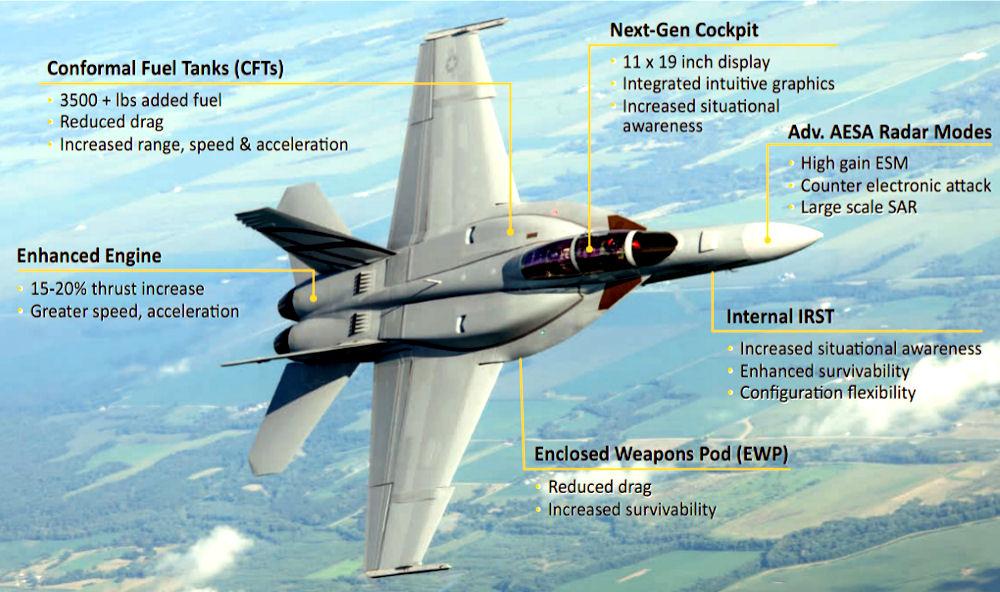
The U.S. Navy (USN) and U.S. Air Force (USAF) are concerned about the ability to achieve and retain air superiority in future conflicts. In 2008, with the F-35 program underway, the USN issued a new requirement for an air superiority platform, the F/A-XX. The USAF, looking at its small fleet of F-22 Raptors–187 total, 125 combat-ready–and the status of the F-35 program, kicked off its own F-X program or Next-Generation Air Dominance (NGAD) in 2012.
In 2015, Frank Kendall, the Pentagon’s “acquisition czar” combined these two programs into Penetrating Counter-Air (PCA) to be run by the Defense Advanced Research Projects Agency (DARPA). This means that some basic requirements will need to be agreed upon, such as stealth or low-observable characteristics. The USN and USAF have some differing viewpoints on this particular topic.
USAF Air Combat Command (ACC) chief Gen. Herbert “Hawk” Carlisle says stealth will be “incredibly important” for the F-X aircraft that the USAF is pursuing as an eventual F-22 replacement. This viewpoint is reinforced by statements that the USAF’s fourth-generation fighters, F-14, F-15, F-16, and F-18, are “obsolete” even after upgrade, and “they simply will not survive” against the threats of the future, such as anti-access/area-denial (A2/AD) capabilities.
Meanwhile, USN Chief of Naval Operations Adm. Jonathan Greenert, has said that “stealth may be over-rated.” In a speech at the Office of Naval Research Naval Future Force Science and Technology Expo in Washington, D.C., Greenert said “I don’t want to necessarily say that it’s over, but let’s face it, if something moves fast through the air and disrupts molecules in the air and puts out heat–I don’t care how cool the engine can be–it’s going to be detectable.”
Aviation Week detailed these advances in counter-stealth capability, including both radars and Infra-Red Search and Track (IRST):
U.S. Air Force is the latest convert to the capabilities of IRST. The U.S. Navy’s IRST for the Super Hornet, installed in a modified centerline fuel tank, was approved for low-rate initial production in February, following 2014 tests of an engineering development model system, and the Block I version is due to reach initial operational capability in fiscal 2018. Block I uses the same Lockheed Martin infrared receiver—optics and front end—as is used on F-15Ks in Korea and F-15SGs in Singapore. This subsystem is, in turn, derived from the IRST that was designed in the 1980s for the F-14D.
While the Pentagon’s director of operational test and engineering criticized the Navy system’s track quality, it has clearly impressed the Air Force enough to overcome its long lack of interest in IRST. The Air Force has also gained experience via its F-16 Aggressor units, which have been flying with IRST pods since 2013. The Navy plans to acquire only 60 Block I sensors, followed by 110 Block II systems with a new front end.
The bulk of Western IRST experience is held by Selex-ES, which is the lead contractor on the Typhoon’s Pirate IRST and the supplier of the Skyward-G for Gripen. In the past year, Selex has claimed openly that its IRSTs have been able to detect and track low-RCS targets at subsonic speeds, due to skin friction, heat radiating through the skin from the engine, and the exhaust plume.
Are Fourth and Fifth Generation Fighters Comparable?
Then on 21 December 2016, in the middle of this ongoing debate, president-elect Donald Trump tweeted: “Based on the tremendous cost and cost overruns of the Lockheed Martin F-35, I have asked Boeing to price-out a comparable F-18 Super Hornet!”
Many have asked, can an upgrade to a “legacy” fighter like the Super Hornet be comparable to a fifth-generation fighter like the F-35? Some have said that an advanced Super Hornet is an “Impossible Magic Fantasy Jet.” Others flatly state “No, Mr. Trump, You Can’t Replace F-35 With A ‘Comparable’ F-18.” More eloquently stated: “In this modern era of stealth combat, there are two kinds of fighters. Stealth fighters and targets.”
The manufacturers of the two aircraft mentioned in Trump’s tweet have been debating this topic over the past few years. In 2014, Boeing questioned the relative capabilities of the F-35C and the E/F-18G “Growler”, an electronic attack variant of the Super Hornet. “Stealth is perishable; only a Growler provides full spectrum protection.”
Indeed, that same year, Boeing developed an Advanced Super Hornet. The idea was basically to enclose the weapons that current Super Hornets sling beneath their wings into a low-observable pod and thus bring the overall radar cross section (RCS) i.e. the main metric of stealth, down to a level that would provide some of the penetration capability that a fifth generation fighter enjoys.

The current version of the advanced Super Hornet has “matured” after additional conversation with their primary customer, and low-observability has taken a less important role than range, payload, and battle-network capability. Indeed, Mr. Trump responded “We are looking seriously at a big order.”
For the USN, the F-35 seems to have evolved from a strike fighter into a platform for command, control, communications, computers, intelligence, reconnaissance and surveillance (C4ISR). This is an important role to play, undoubtedly, but it may mean fewer F-35Cs on carrier decks, which puts more money back into the pocket of the USN for other purposes.

Of course, Lockheed is not resting still – they’ve recently demonstrated a manned and unmanned teaming capability, working with the Air Force Research Laboratory.
What both companies and both services state publicly must be taken in the context of politics and business, as they are in constant competition, both with each other and potential opponents. This is a natural way to come up with good concepts, good options, and a good price.
More on autonomous capabilities to follow.
